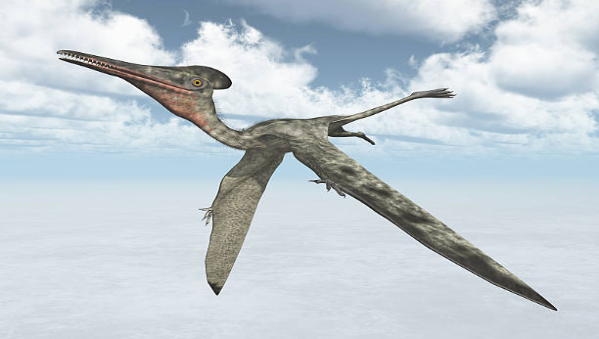Teradactyl: Unveiling the Mythical Creature and Its Origins

Table of Contents
Teradactyls, also known as pterodactyls, belong to the order Pterosauria, which is a group of extinct flying reptiles that lived during the Mesozoic Era. Within the order Pterosauria, Teradactyls are classified into the suborder Pterodactyloidea, which includes some of the largest and most well-known species of pterosaurs.
Describing the Anatomy and Appearance of Teradactyls
Teradactyls were characterized by their impressive wingspans, elongated beaks, and membranous wings supported by an elongated fourth digit. These flying reptiles exhibited a wide range of sizes, with some species boasting wingspans of up to 33 feet (10 meters).
Where Teradactyls Lived and Thrived
Teradactyls inhabited various regions across the globe, including present-day North and South America, Europe, Africa, and Asia. Fossil evidence suggests that these creatures primarily inhabited coastal environments, where they likely fed on fish and other marine organisms.
Understanding the Eating Behavior of Teradactyls
Teradactyls were carnivorous creatures, with diets consisting primarily of fish, small reptiles, and insects. Their long, slender beaks and sharp teeth were well-suited for catching and consuming prey in flight, making them efficient predators in their respective ecosystems.
How Teradactyls Interacted with Each Other
While much remains unknown about the social behavior of Teradactyls, it is believed that they may have exhibited some degree of social interaction, particularly during mating seasons or when congregating around food sources. However, the extent of social behavior among Teradactyls remains a topic of speculation among paleontologists.
Reproduction and Life Cycle
Teradactyls likely reproduced by laying eggs, similar to modern-day birds and reptiles. Fossilized eggs and nesting sites attributed to pterosaurs suggest that these creatures engaged in nesting behaviors and parental care to some extent, although details of their reproductive biology remain elusive.
Examining the Fate of Teradactyls in the Geological Timeline
Teradactyls thrived during the Mesozoic Era, particularly during the Jurassic and Cretaceous periods, before facing extinction at the end of the Cretaceous period approximately 66 million years ago. The exact cause of their extinction remains uncertain, although factors such as environmental changes, competition, and asteroid impacts are thought to have contributed to their demise.
Teradactyls in Mythology, Folklore, and Popular Culture
Throughout history, Teradactyls have captured the imagination of humans and have been featured prominently in mythology, folklore, and popular culture. From ancient myths and legends to modern-day movies and literature, Teradactyls continue to inspire awe and fascination as symbols of ancient worlds and lost civilizations.
Different Interpretations and Hypotheses about Teradactyls
While paleontologists have made significant strides in understanding Teradactyls, many mysteries and unanswered questions remain surrounding these enigmatic creatures. Ongoing research and discoveries continue to shed light on their biology, behavior, and evolutionary significance, offering new insights into the world of prehistoric life.
Conclusion
In conclusion, Teradactyls represent a fascinating chapter in the history of life on Earth, serving as iconic symbols of the Mesozoic Era and the remarkable diversity of prehistoric creatures that once roamed the planet. As scientific knowledge and understanding of Teradactyls continue to evolve, their legacy lives on as captivating reminders of our planet’s ancient past.
FAQ
How do Teradactyls differ from dinosaurs?
Teradactyls belong to the group of flying reptiles known as pterosaurs, which are distinct from dinosaurs. While both groups lived during the Mesozoic Era, pterosaurs like Teradactyls evolved separately from dinosaurs and are characterized by their unique anatomy and flight adaptations.
Are Teradactyls related to birds?
Teradactyls are not directly related to modern birds but are distant relatives of birds within the broader group of archosaurs, which includes dinosaurs, crocodiles, and birds. Birds are thought to have evolved from small, feathered theropod dinosaurs, whereas pterosaurs like Teradactyls represent a separate lineage of flying reptiles.
How do scientists study Teradactyls if they are extinct?
Scientists study Teradactyls primarily through the analysis of fossilized remains, including bones, teeth, and footprints. By examining fossil evidence and employing techniques such as CT scanning and biomechanical modeling, paleontologists can reconstruct the anatomy, behavior, and evolutionary relationships of Teradactyls with a high degree of accuracy.
Support Ukraine against russian fascists! Defend Europe from horde! Glory to Ukraine! 🇺🇦

George Brown is a main editor in Bitgraph Network Team.